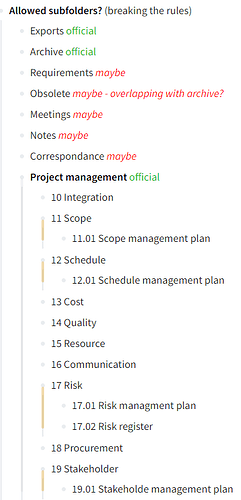Background for my question
-
I wish I’d implemented JD many years ago.
-
I’ve always kept structure, but not one with such a clear-cut and simple approach as JD.
-
I am strongly motivated to avoid complexity when and if possible.
-
I do have experience of the costs / downsides of complexity and of systems that are ambigious (resulting in several interpretation and different practices) - OR to work-intensive/demanding to keep up-to-speed.
-
Gradually moving everything (past 20 years+) into the JD structure, and it feels great. I really like it. I’ve gained a clarity with JD that I’ve always desired.
-
I use Teracopy for loading/moving files into the JD structure in orderly fashion. I’ve also found a clear way for backups (Syncthing, NAS serves for “hot storage” with available multiple, versioned backups - and cold storage (sometimes offline), with single versions for large but not so important files that are rarly accessed).
Question:
What do other people do when the need for “exception” arise? How do you deal with the odd-ducks and when there is a need to go outside the system
I’ve read the workbook, the website and the forums.
I know I have some cases where I need to put a yearly subfolder (YYYY) under an ID, but that I can live with.
I also have some cases where I end up in the “freelancer problem”, but I believe I will fix this by going offroad and do three digit subfolders under the ID
As in:
- Area 20-29
- Client 23
- ID 23.01 Title
- Offroad 23.01.001 Description
What subfolders do you allow yourself to use? Any shareable experience?
Summary of what subfolders I might allow myself to use:
I am hesitant with the red ones.
Will it become too complex?
I think I’ll try to avoid them.
